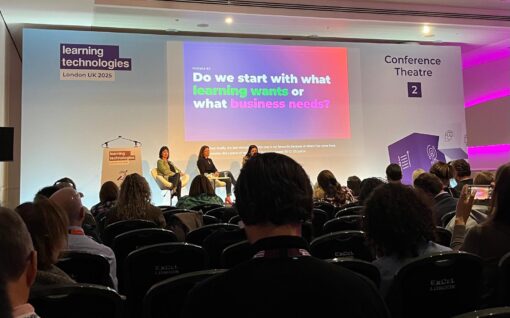The power of the word
Our Head of Insights, Roisin Woolnough, looks at how journalism skills support our client work around business strategy.
At the weekend, a friend asked me a question I have been asked many times before: “So you’re a journalist and content specialist by trade, who writes thought leadership pieces about learning and talent – how does that translate into helping organisations with their business and content strategy?” It’s a pretty good question and I can understand why this friend and others have asked.
People get the content strategy bit as I and the rest of the Insights Media team have made a career out of content for over 20 years – but advising organisations on their business strategy as well… Where does that come from?
The two skillsets look pretty different, right? Well, they are actually less different than you might think. Here’s why:
Know thy audience
The number one rule of journalism is knowing your audience. If you don’t get this bit right, you’re scuppered.
As a journalist and content specialist you have a target audience. You have to understand that target audience – what they want to know, what they need to know, what makes them tick, how they consume content, the direction of travel etc. In the simplest terms, you have to create a product that they are interested in, that gets their attention and hits their buttons and will keep them coming back for more.
Isn’t that exactly what every organisation wants and needs to do? You need to know your audience, deliver the product or service that they need and keep adapting and innovating that product/service as their needs change and as the market changes. Bingo.
Research and insights
I cut my journalism teeth on an IT mag. Computer Weekly was the industry bible for the IT sector and the thing about industry bibles is that readers expect them to be rock solid. Readers want expertise, they want insights and they want reliable, credible, useful research.
How do journalists get that? By looking at evidence and research, pulling out what’s important and using it to generate insights. You have to get right to the heart of a story in order to identify the insights. Otherwise you’re floundering around creating fluff.
When you’ve got your insights, you interview people (for, against and neutral to get a full, balanced picture) to get their take, their insights. Yes, the story stacks up and this is what else you need to know. No, it’s rubbish – this is the real story. Of course, sometimes you have to discard what people are saying (typically when you are trying to get to the truth and interviewees want to keep you from it) and stick to the evidence. Think about the Post Office scandal –CW broke that story.
It’s always a balancing act between evidence, research, insights, opinion, experience and judgement. There’s a lot of sense making in journalism – you are continually using your judgement and knowledge and drawing your own conclusions.
Telling the story
I think it’s pretty obvious why journalists and content peeps are good at this bit! It is worth saying though that telling a good story can only happen when backed up the above. You may tell a story beautifully but if it’s not a story your audience is interested in, it won’t land. You have to craft it and pitch it so they are interested. And if it’s not backed up with research and insights, is it a good story or is it just fluff?
Change and innovation
Anyone who has worked in content the last 20 years knows a lot about change and innovation. Print to digital, blogging, tweeting, Instagram, TikTok….We’ve had to do all this and more and always in the public eye. We know how to undo habits, learn new habits, ditch old ideas, incorporate new ones…We’ve had to think about what’s worth keeping and what no longer resonates with people. That’s change and innovation, on repeat.
You’ll be pleased to know that’s a much lengthier answer than the one I gave my friend! She got the potted version, but she seemed satisfied.
Something else I’d like to talk about quickly before signing off is a new section on our website – the Insights Media Research Radar. It’s where we will post all of the new research we come across that we think worth sharing with the learning and talent community. It’s broken down into sections – CEO and C-suite research, learning research, skills trends etc – making it very digestible and navigable.
Time and time again clients tell us how much they value the insights gathering and analysis that we do, so we hope you find this new section useful.
Photo by Brett Sayles

